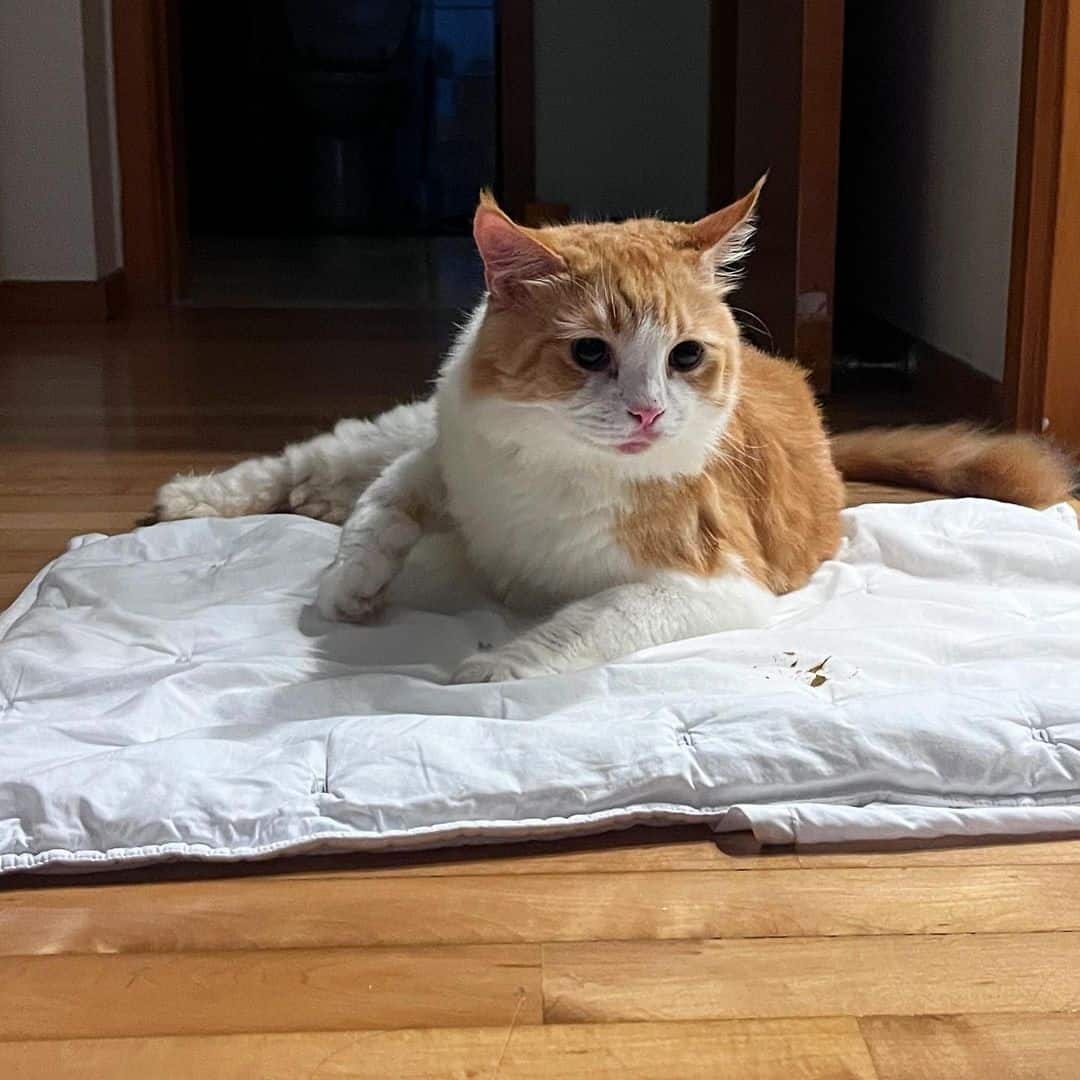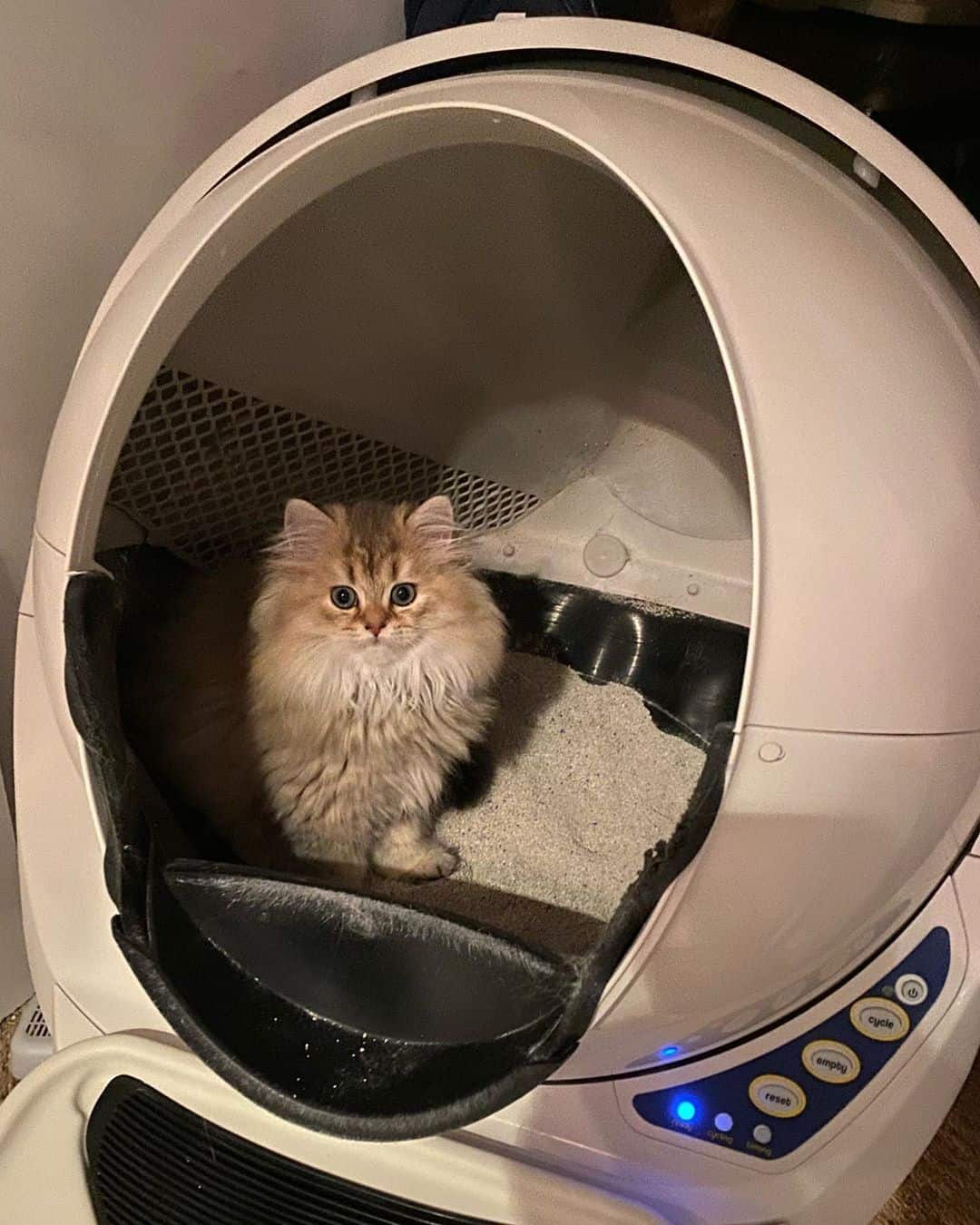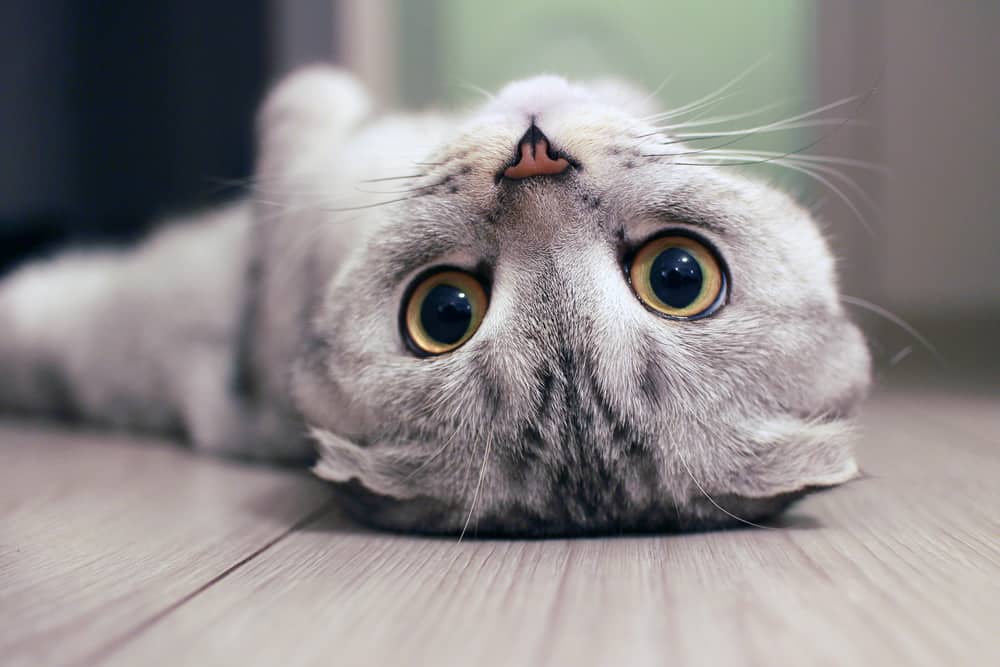Are you getting a cat for the first time? If that’s the case, you’re probably asking, what does cat poop look like? You may also be wondering if local cats are using your backyard as their own personal litterbox! Whatever the reason, we have all the info you need right here.
When it comes to cat poop, you can learn a lot about your cat’s health from it. Here we’ll share everything you need to know about cat poop. We’ll also give you insights into how to keep your cat’s digestive system healthy. So let’s get started!
What Does Cat Poop Look Like?
Generally, cat poop is like malleable modeling clay, not too hard and not too soft. In their appearance, they can look like small sausages or even Tootsie Rolls. If your cat’s poop looks like these, then they are passing stool normally, and it means you’ve got a healthy kitty.
Healthy cat poop is dark brown but not too dark, since blackish poop means there’s blood in it. It can look similar to dog poop, and it can be easy to confuse the two. However, dog poop is usually a little softer than cat poop, and there is usually more of it!
Poop of Healthy Cats
A healthy cat’s poop may differ slightly since each kitty is unique. What’s normal for your feline could be entirely different from another kitty. But if you discover changes to your cat’s usual routine, it’s best to contact the vet.
Color – To be specific, the color of your cat poop should be chocolate brown. If they eat food with added color, these shades might come through their poop as well.
Shape and Size – As we mentioned earlier, the shape of their poop should be like sausages or Tootsie Rolls. These also shouldn’t be too soft or hard, and if it isn’t formed, your kitty might be experiencing diarrhea.
Size-wise, the volume of their poop should be proportionate to how much food they eat. Their poop size increases when there’s more fiber content in their food.
Consistency – Again, it’s important to note that cat poop shouldn’t be too soft or hard. Instead, it should be firm and somewhat malleable.

Can Poop Show if Your Cat is Sick?
Your cat’s poop isn’t just something you scoop from the litter box and then discard immediately without checking. It’s important to monitor since cat poop can tell you a lot about your pet’s overall health.
Generally, there will come a time when your pet’s poop looks abnormal. Inconsistent poop can indicate something like diarrhea or even more serious health problems. These could be issues like liver or gallbladder problems.
This is why it’s important to know what abnormal cat poop can look like. You’ll be able to determine what’s wrong with your kitty to get the proper treatment they need.
1. Consistency
Let’s have a look at some common consistency issues:
- Mushy Poop with a Certain Shape – If your cat’s poop is mushy but still has some shape, it likely has an upset stomach. Sudden diet changes usually cause such issues. However, if their poop doesn’t return to normal after a few days, or if they start developing new symptoms, contact the vet immediately.
- Watery Poop – If their poop is watery and without any shape, your cat likely has diarrhea. This problem in cats is usually caused by worms, viruses, bacteria, or intolerances to food.
Inflammatory bowel disease is also an issue that can cause diarrhea in cats. It’s also usually a symptom of cat skin allergies caused by airborne allergens. This can also happen if your cats are sensitive to some food. If diarrhea doesn’t subside within a couple of days, or if they develop other symptoms, rush your cat to the vet.
2. Color
The color of cat poop can tell you a lot. Let’s look at all the variables:
Red Hue – If your cat’s poop has some red on it, it means they’re bleeding from their rectum/anus. Infectious diseases like feline panleukopenia or bacterial infections like salmonella can cause bleeding from your cat’s anus.
If the bleeding doesn’t get better in a few days or if it’s accompanied by other symptoms, contact your vet asap.
Orange Hue – If there’s some orange hue on your cat’s poop, they’re likely suffering from liver or gallbladder problems. This is usually caused by bacterial infections starting in the intestines that either spread throughout the blood or move to the bile duct. Other causes could be tumors, abdominal trauma, and bile duct obstruction.
Black Hue – This is dangerous since black hues in their poop mean there is bleeding in their GI tract. At the same time, your cat might also experience chronic vomiting, poor appetite, weakness, and weight loss. The treatment for such issues varies depending on the cause.

Yellow Hue – Liver or gallbladder problems might be causing your cat’s poop to have a yellow hue. But sometimes, this is normal for them. However, if the color doesn’t disappear after a couple of days, it’s best to contact the vet and tell them about it.
Green Hue – Green hues in your cat’s poop mean they are suffering from a parasitic or bacterial infection. However, it’s also possible if they’ve eaten grass.
Bacterial infections can happen if your cat consumes contaminated water, feces, dairy products, or undercooked meat. If this happens, the vet will possibly prescribe antibiotics to treat the infection. In severe cases, your cat could become dehydrated. So, fluids will be necessary to hydrate them.
White Spots – Seeing white spots in your cat’s poop are common, and they could be dealing with intestinal parasites. If you spot these in their poop, contact the vet for help and inform them about the situation.
3. Constipation
If your cat has a hard time pooping and these end up looking like pebbles, your cat is constipated.
Constipation can happen due to various issues like anxiety, stress, allergies, dehydration, nerve problems, etc. If your cat is struggling to poop, ask your vet about it so they can provide a solution. Likely, your vet will recommend a fiber-rich diet to ease the problem.
If they can’t poop at all, your cat likely has severe constipation. This is caused by the ingestion of foreign bodies like bones. It could also be caused by hairballs, pelvic injuries, obesity, or diabetes.
4 Ways to Prevent Digestive Issues
Cats are known for their digestive problems, but it doesn’t mean that vomiting and diarrhea are normal for them. Instead, it could be a sign of bigger health issues. If your pet vomits or gets diarrhea regularly, here are ways to improve your cat’s digestion.
1. Balanced and Complete Diet
Giving your cat a complete and balanced diet ideal for its breed, age, and lifestyle will guarantee a healthy, happy kitty. This will allow them to produce perfect cat poop that will be satisfying on their part.

2. Give them Fiber-rich Food
As we mentioned earlier, if your cat is constipated, give them fiber-rich food. You can also give them meals that are designed for hairball control. This type of food gives your cat extra fiber to help its digestion. Plus, it gives them nutrients to reduce shedding and promote a healthier coat.
3. Increase Water Intake
Another possible cause of constipation is dehydration. You can fix this issue by increasing your cat’s water intake and including wet food in its regular diet.
4. Go for an All-Canned Diet
A lot of cats can’t handle the excessive amounts of carbohydrates in their dry food. So, it’s a good idea to opt for a canned diet to prevent diarrhea and vomiting.
If you’re free feeding your cat with a kibble diet, we suggest shifting to a canned diet slowly. Do this by decreasing the kibbles you give your cats. You probably need to try different flavors of canned food to determine what their favorite is.
Cat Foods to Avoid
If there are foods to give for better digestion, there are also things to avoid to prevent digestion issues in your fur baby.
- Fatty Foods – These kinds of food can cause digestive issues and stress. Fatty food we’re talking about includes ham, and other types of meat rich in fat.
- Undercooked and Raw Meat – Undercooked or raw meat likely contains bacteria like E. coli or salmonella. These can cause diarrhea, vomiting, and loss of appetite in your cats. So to keep their digestive health intact, avoid giving them undercooked and raw meat.
- Cow’s Milk – Cow’s milk is a big no-no for your kitties. After weaning, kittens lose their ability to digest milk. That means more than a couple of licks could lead to episodes of diarrhea. If your cat loves milk, you can give them a specially-formulated lactose-free product to satisfy its milk craving.
- Bones – We’ve all watched cats snitching fish bones in cartoons. However, these and other types of bones from poultry and meat are dangerous to your cats and are best avoided.
If your cat manages to get their paws on one, eating it could severely damage its digestive tract. Also, eating a bone can lead to obstruction or lacerations inside the digestive system.
Conclusion
Now you know all there is to know about cat poop! It usually comes down in dark brown sausages, and still be stiff in texture, especially compared to dog poop. If your cat’s poop doesn’t look like this, then it may be best to take them to a vet.
